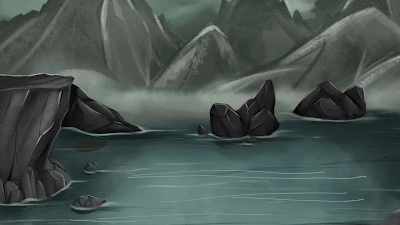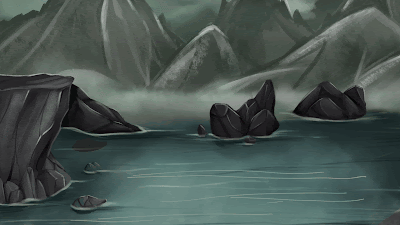Applied Animation
Fenrir Puppet Animation
- This week:
- I worked on the final shot of Fenrirs' scenes, which is puppeted animation in Toon Boom Harmony.
- What went well:
- I was able to recreate an effective slow-motion shot, using multiple layers in Toon Boom Harmony, similarly to how I created the slow motion animation for Jormungandr.
- This included puppeting each body part and I had effectively learnt how to rig, so the drag on his paws were created with this method.
- My first attempt included a few frames showing his head facing down, before he lifts up and it felt quite jarring, so I removed this when I animated the anticipation shot before, as that already demonstrated that movement.
First test
- When I added snow, it really helped to amplify the movement of his paws coming up from the ground and flicking up the snow, into the air. Once that was approved by my group, I could start on the fetter animation, which proved the most difficult, as I needed to animate it as though it was moving in slow motion.
- Adding effects, such as the glow, made the fetter stand out more, and implicate it's special qualities, visually.
- What could be improved:
- The width of the fetter needs to be adjusted, as it's too wide at the moment. I'll be doing this before re-exporting, to make sure that it is consistent with Caitlins' frames.
- This shot could be further improved in post-production, with slow-motion mist effects and slow motion falling snow, which Joseph and I will be creating in After-Effects.
- Finally, this can be further improved to fit in better with the shots before and after, with a snow fall transition effect. I will be experimenting with this next week.
- Next week:
- I will be exporting the animation work so far to prepare for post-editing. I need to finish some final details, such as transitions and last-minute edits to the animation.

















































